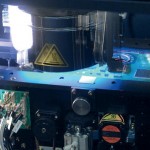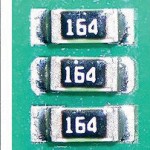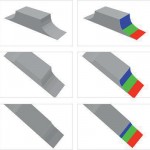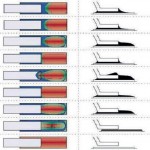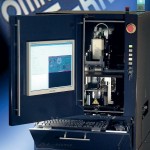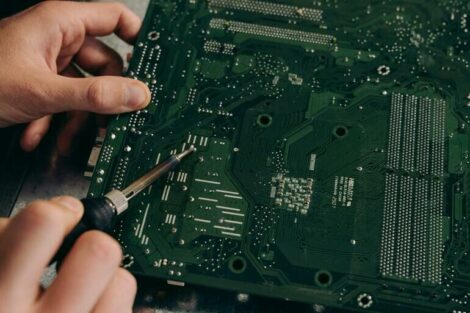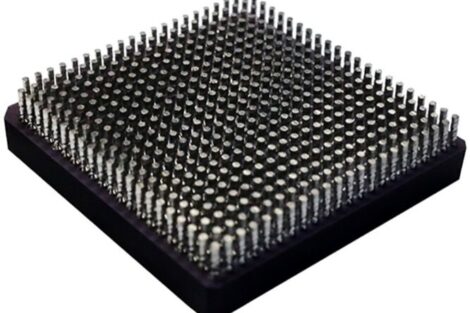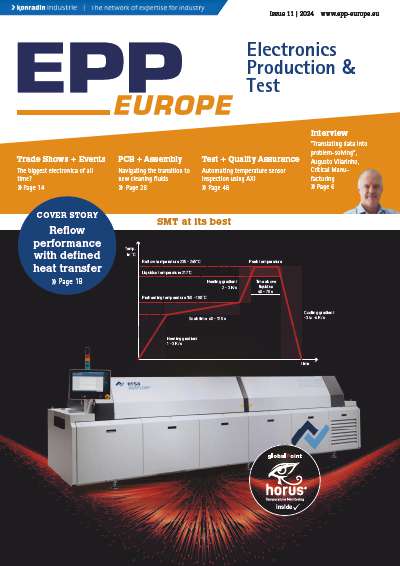The automobile has had the luxury of over 100 years to perfect both the engine and the power train and these days, a simple mechanical engine failure is virtually unheard of. Electronics failure, whether inside the engine compartment or cabin, is becoming far more common especially if you got carried away with the options list when ordering your new vehicle. The challenge therefore for the manufacturer is to make the electronic or electro-mechanical systems as reliable and robust as the mechanical ones. As part of a test and inspection strategy, AOI (automated optical inspection) provides a key component and complements the other elements of the process.
Ordering a car used to be so simple. Colour, engine size, electric windows and leather was about it. However, the option list for most modern cars now runs into several volumes and adds considerable cost to the price of the basic car. Additionally many of yesterday’s electronic and electro-mechanical extras are now fitted as standard in many cars. Today, luxuries such as ADAS (advanced driver assistance systems) and ACC (adaptive cruise control) are offered to enhance and refine the driving experience but there can be no doubt that new vehicles continue to increase their dependence on sophisticated electronics assemblies for comfort and safety. Many of the options available today are either electronic or rely increasingly on electronics to perform. The simple car has been transformed from a vehicle whose primary function was to move people from A to B, to a mobile entertainment centre and gadget lover’s paradise. Some estimates put the value of electronics accounting for 25% of the total cost of the car by 2010. So with all this innovation and technical wizardry enhancing and refining our experience of simply getting from A to B, can this really be called progress? Here at Omron we believe the answer is both yes and no. This innovation in automotive technology has certainly improved the safety of modern cars, protecting the occupants with the aid of lots of electronic sensors and controls. ESP (electronic stability program), prevents bad drivers from entering the path of others and parking aids make it possible for everyone to parallel park without the embarrassment of potentially swapping bumper colours.
The down side to all this additional technology is reliability. The automobile has had the luxury of over 100 years to perfect both the engine and the power train and these days, a simple mechanical engine failure is virtually unheard of. Electronics failure, whether inside the engine compartment or cabin, is becoming far more common especially if you got carried away with the options list when ordering your new vehicle. The challenge therefore for the manufacturer is to make the electronic or electro-mechanical systems as reliable and robust as the mechanical ones.
From an electronics standpoint, the car is an extremely hostile environment. In ideal situations, such as when stationary in a controlled environment, such as the home, electronics work very well. A television will typically work for many years without fault and eventually be replaced, not because it breaks down, but because you have decided to transform your living room into a home cinema and need to replace your ageing system with a state-of-the-art 42 inch plasma screen.
By contrast, electronics in a vehicle are expected to work under very challenging conditions. Your car often lives outside in the cold and damp. On those winter mornings when the temperature outside is freezing; the electronics under the bonnet are expected to work on demand. By the time you get 10 minutes into your journey those same electronics under the bonnet have gone from sub zero to 10s of degrees and still have to work. While idling and on the move, the electronics are also expected to work through the continuous vibration inflicted on the entire vehicle not to mention the proximity of substances such as fuel, oil and transmission fluid and increase in electronics density.
Given the hostile environment that automotive electronics are expected to operate under, it is not surprising that electronic failure is increasingly a common cause of breakdown. In 2005 there were in excess of seven million worldwide official recalls by the manufacturers of cars due to problems with the electronics. If that wasn’t bad enough, this figure is not comprehensive or inclusive of individual failures experienced by customers on a daily basis. Some failures are no more than an inconvenience for the customer who as a result, has to find time to take the car to the garage for fixing but from a manufacturers standpoint this is still damage to the brand name which is becoming more desirable to avoid, both from loss of consumer confidence through to having to pay the cost of warranty repairs. Other failures can be potentially life threatening with electronic failures leading to terrible human consequences. However, car manufacturers are wise to this possibility and have, over a period of time, systematically divorced themselves from the manufacturer of the component parts including the electronics. All major car OEMs have, in recent years, sold off their electronics divisions. As a result, it is the responsibility of the electronics manufacturers to take responsibility for any legal challenges in cases of a critical electronic system failure that results in injury or loss of life.
The pressures on the manufacturers of all electronic assemblies, including automotive, are varied and can often oppose one another. Cost of manufacture is, of course, critical to staying competitive. Quality control is crucial to safeguard the delivered quality of the product, but comes at a cost. And finally, traceability is needed to guarantee the delivered quality of the product. None of this is achievable without measurable quality control.
In order to achieve these opposing objectives, a well thought out test and inspection strategy is the key to success. By automating these tasks, costs can be kept to a minimum, quality can be monitored and the results can be traced through the process. As part of a test and inspection strategy, AOI (automated optical inspection) provides a key component and complements the other elements of the process.
AOI can provide up to 100 % inspection coverage of electronic assemblies and is complemented by electrical test and function test for electrical and placement checking. A good AOI solution can confirm the correct placement and position of components, the presence of a strong solder joint and the correct wetting of the joint. These are all key elements of a reliable product that can survive the harsh environment of the automobile.
Manufacturers should also ensure that any AOI solution purchased is capable of providing closed-loop quality control of both the mechanical and electrical qualities of the PCB assembly. Omron’s range of AOI solutions provides this level of information and control and all its systems deploy the unique patented 3 colour highlight and high resolution camera. By using a true Red, Green, Blue (RGB) light source, two dimensional shapes can be represented in three dimensions. The human eye can only see 16 shades of grey but is capable of distinguishing 16.4 million colours.
This lighting system illuminates the target from all angles and in all directions in a 360 degrees dome (dome illumination). The advantage of dome illumination is that it enables stable performance of inspection regardless of component placement directions or other angle designs. In high-density placement applications, the reflective luminosity of the solder surface is diminished by the shadows of adjacent components. The red, green and blue Light Emitting Diodes (LEDs) of the colour highlight system are arranged so as to provide information by measuring the chromacity of the target. The result is inspection results that are not easily affected by fluctuations in the brightness of the solder surface. This proves extremely effective when used in lead-free production lines where the solder surface is naturally duller in appearance.
The 3-CCD camera used by the Omron system addresses one of the most difficult areas of accurate inspection, which is solder shape recognition. By obtaining three times the information of a conventional camera the AOI system (figure 1 and 6) is able to deliver highly robust inspection results with resolutions down to 10 microns. Other features include colour enhancing capability to more accurately identify solder shape, auto-teaching modes, integrated graphical user interface and logic customisation which caters for easy adoption of future changes in placement trends such as new component types. In figure 2, the same three resistors are shown under different camera and lighting conditions. In both the grey scale and colour images with direct lighting, the shape of the solder fillet is difficult to judge or measure.
With the colour camera and colour highlight technique employed in the right hand picture, the shape of the solder is clearly visible and measurable.
To explain this further, in figure 3 there is a series of 6 images. The three on the left illustrate the view from a greyscale camera without colour highlight. The three on the right illustrate the effect of colour highlight when viewed and processed in colour. When viewed in profile as in images 1 and 2, the shape of the solder fillet can be clearly seen. As we move to a direct top view, the shape of the fillet becomes less obvious in the greyscale image, 3. When viewed from above, the shape of the greyscale fillet, 5, is impossible to judge, whereas in the colour highlight image, 6, the shape is clearly measurable. It is this principle that makes it possible to measure the solder fillet shape with a single high resolution colour camera and colour highlight technology.
Figure 4 shows the effect of the patented colour highlight technique on a series of IC leads. The picture illustrates various conditions of lead soldering. The colour profiles of the solder joints reflect the shape of the solder. The uppermost lead shows a good wetted solder joint whereas the second from bottom lead shows a lifted lead. In figure 5, two chip resistors are shown before and after the test has been executed. The tested resistor on the right shows just some of the solder tests represented by the white and red highlighted areas. By deploying this innovative technology, users can determine the quality of the solder joint allowing it to be quantifiably measured. Combining this with post paste and placement inspection, Omron really can guarantee the outgoing quality of the product.
As consumers, we want affordable cars packed with electronics that work for the life of the product. The car manufactures want reliable (low warranty costs), cost effective (higher profits), and technically advanced electronics to meet the demands of the consumer. The electronic manufacturers want the highest deliverable quality and the lowest cost with traceability throughout the process. Thanks to one of the world’s largest AOI installed bases, Omron is positioned to understand the market dynamics and ultimately the business needs into today’s fiercely competitive market place. The introduction of higher density boards to the automotive applications has meant that traditional AOI technology is becoming less able to effectively inspect and process the finished products. The need for effective and reliable AXI (Automated X-ray Inspection) techniques looks set to continue. As a manufacturer in its own right, Omron has over 37 factories worldwide that are actively manufacturing in today’s competitive market which include automotive components for leading car companies. This experience and insight has given it a great insight into the dynamic world of electronics manufacture in the automotive sector and will continue to help it develop groundbreaking solutions that deliver real advantages to its customers.
electronica, booth A1.373 & C3.121
EPP Europe 427
zusammenfassung
Die Ausstattung von Autos besteht zunehmend aus Elektronik oder hängt von elektronischen Komponenten ab. Die Herausforderung besteht darin, die Elektronik oder elektromechanische Systeme so zuverlässig und robust zu machen, wie dies bei den früheren mechanischen Systemen der Fall war. Als Teil der Teststrategie kommt der AOI (Automatische Optische Inspektion) eine Schlüsselrolle zu. Sie ergänzt die anderen Bestandteile des Prozesses.
L’équipement des voitures est de plus en plus électronique ou dépend de composants électroniques. Le défi consiste à rendre les composants électroniques ou les systèmes électromécaniques aussi fiables et robustes que les anciens systèmes mécaniques. Dans le cadre de la stratégie de test, l’inspection optique automatique (AOI) joue un rôle clé et complète les autres éléments du processus.
La dotazione delle automobili comprende sempre più componenti elettronici o dipende da essi. La sfida consiste nel rendere i componenti elettronici o elettromeccanici così affidabili e robusti quanto i precedenti sistemi meccanici. Un componente decisivo nella strategia di test è l’ispezione ottica automatica (AOI). Completa gli altri componenti del processo.
Share:




